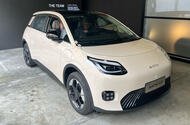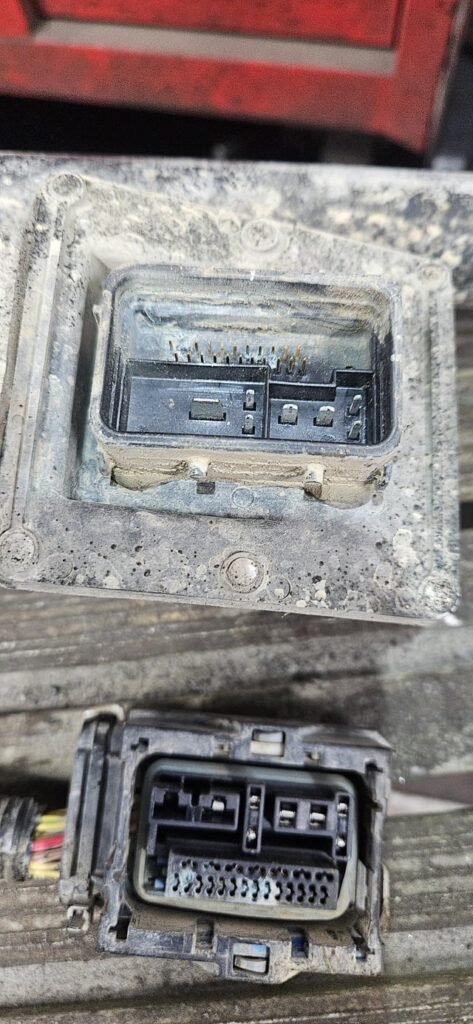The GAC Aion UT is billed by its maker as “China’s version of the Mini”
State-owned car maker – a partner of Honda and Toyota – plans to undercut established EVs here
GAC, one of China’s biggest car makers, will launch in the UK early next year with an electric hatchback and SUV aimed squarely at Volkswagen’s ID 3 and ID 4.
The firm’s announcement confirms Autocar’s exclusive report that it was planning an imminent launch here, with the firm viewing the UK as an especially bountiful growth market for EVs.
As previously reported, the joint-venture partner of Honda and Toyota – which sold just over two million cars last year – plans to undercut established brands on price to attract buyers.
The smaller of its first two models is the Aion UT hatchback, billed as “China’s version of the Mini”.
Designed to suit city commuters, it’s slightly longer and wider than the ID 3 – a decision informed by Chinese buyers’ expectations of interior space.
It is priced from the equivalent of just £7500 in its homeland but is expected to cost significantly more in the UK, due to the cost of shipping the car across the globe, plus taxes.
But, according to GAC COO Thomas Schemera (who was previously a leading figure at Hyundai’s N performance division and at BMW before that), the Aion UT must come in at a competitive price to generate any traction in a difficult market.
“From a price positioning point of view, to be higher than other competitors which have a well-established brand, that would be very challenging,” he said.
“Let me put it this way: we have to be smart and clever here to put our morals on the streets and also to simultaneously build the brand, not just with the product presence but supported by campaigns.
“As long as our brand value is on such a low level, we have to do everything to increase it.
“With this mechanism, you can also increase the price step by step for your products. But first of all, you have to build confidence.”
To that end, the Aion UT is expected to land in the UK in the mid-to-high £20,000s. This would have it significantly undercutting the ID 3 (£30,795), aligning it more closely with the MG 4 EV and upper versions of the Renault 5.
UK specifications have yet to be confirmed, but in China, it employs a front-mounted 134bhp electric motor and a 60kWh lithium-iron-phosphate (LFP) battery, yielding a range of 267 miles.
Inside, the dashboard is dominated by a 14.6in infotainment touchscreen, which is used to operate key functions such as the climate controls.
There is also an 8.8in digital instrument panel showing critical information such as the car’s speed and range.
In keeping with a Chinese trend, the front seats can be folded flat to form a bed-like arrangement with the rear seats.
The hard plastics throughout the interior are moulded to lift perceived quality. For example, the windowsills give the impression of stitched leather, while the backing of the doorcards has a geometric finish, as if to mimic carbonfibre.
Arriving alongside the Aion UT is the Aion V, a Tesla Model Y and Skoda Enyaq-rivalling electric SUV revealed at last year’s Paris motor show.
It gets a 224bhp motor and a 90kWh LFP battery, giving a range of 324 miles.
In addition to EVs, GAC intends to launch a range of hybrids, plug-in hybrids and “in some cases” pure-ICE cars.
The cars will be sold in the UK through a joint-venture with Jameel Motors, currently responsible for retailing Farizon electric vans and soon to add Geely-branded cars to its portfolio.
Q&A: Thomas Schemera, chief operating officer, GAC Motor
What sets GAC apart from its rivals?
“First and foremost, our premium quality. This is nothing outstanding, because every customer expects premium quality, but we have run joint ventures with Toyota and Honda and we learned the ropes from the beginning. If you take a walk through our facilities – especially for Aion [models] – and have a look at our production, we really know how lean production works. Quality is not just a word; we take it very seriously from a customer perspective.”
What are your expectations for GAC’s European launch?
“If you enter a marketplace and your brand awareness is low, you have to build brand awareness. The second step is to interact with customers – walking through this valley of tears, so to speak. You have to invest and you have to be absolutely aware that you cannot make money from the very beginning: this is impossible.”
Why headquarter your design operations in Milan specifically?
“I’m a big fan of globalisation. It’s very, very important from a Chinese perspective to understand globalisation, to want to know what our consumer benefits from across the world, and we have a lot of diversity. Not everything that works in China can be shifted across to another market, and that has to be very clearly understood – and vice versa.”
GAC Hyperluxury concept harks back to Bugatti Type 57SC
As well as fleshing out plans for global expansion, GAC has shared its vision of a personal luxury car inspired by the legendary Bugatti Type 57SC, Concorde and Chanel handbags.
The Chanel inspiration manifests in the Hyperluxury concept’s livery: a black exterior largely free of branding (limited to the shrouds on the wing-mounted pop-up headlights) is contrasted against a bright orange interior, with a huge GAC logo embossed into the dashboard.
The seats are inspired by the minimalist look of the famed Le Corbusier LC4 lounge chair, first produced in 1928, and contain zero heating or cooling elements. The driver is instead supposed to wear a large jacket containing these functions – a reference to the bold outfits worn by motorists in open-top cars throughout the ’20s and ’30s.
Instead of a traditional key, the car is opened and started using a gold ring that the driver can wear as a piece of jewellery.
GAC executives added that the concept was designed without the assistance of artificial intelligence (AI) tools.
Stephane Janin, design director for GAC’s Milan studio, explained: “We thought it should be human-made, because we compare it with luxury goods, and we thought that’s a value we should work on for this very specific project. It was interesting for us to ask ourselves: ‘what does hyperluxury mean nowadays?’”
GAC doesn’t plan to produce the car, however.






